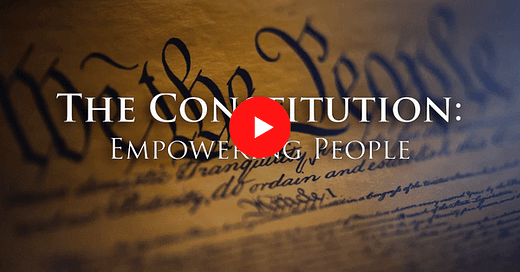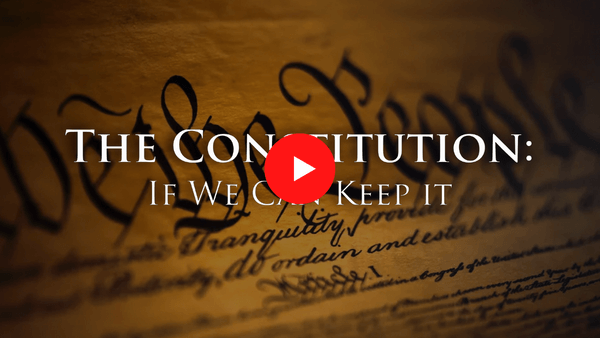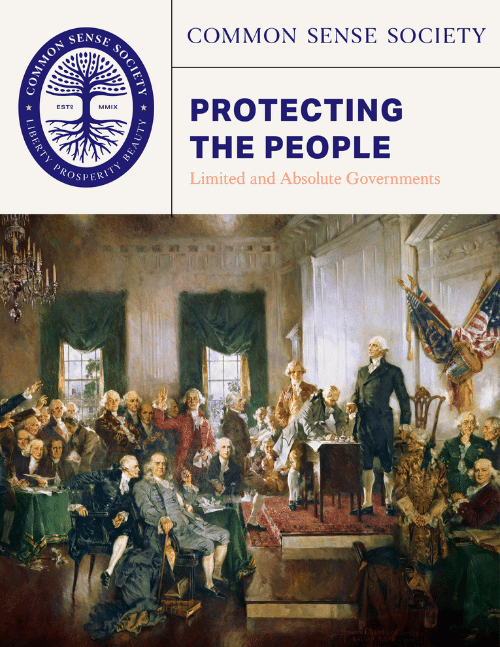What We're Working Toward this Constitution Day
Students at the University of Virginia have recently demanded that the college’s founder, Thomas Jefferson, be removed from campus buildings. But our nation’s third president and the author of the Declaration of Independence is only the latest target of the new self-imposed righteous crusaders. Cancel culture insists that ideas, people, or institutions it deems immoral, offensive, or “problematic” must be eradicated, not only to deprive them of the opportunity to keep offending, but to ensure that they are punished, disgraced, and forgotten. Some people, ideas, and institutions, they believe, are irredeemable.
In The Gulag Archipelago, Russian novelist Alexander Solzhenitsyn wrote that “the line dividing good and evil cuts through the heart of every human being.” None of us, Solzhenitsyn argued, are entirely morally pure and none entirely evil. Common Sense Society senior fellow Dr. Joshua Mitchell argues the same: “We live in an impure world,” he says, “and we must labor in hope, together. We will never have perfection, and we have to learn to work within the partially clean, partially dirty world.”
The United States has a unique remedy for the stain of human immorality, the U.S. Constitution. Our Constitution is a unique mechanism that aids in redemption at the national level. Its framework enables the righting of historical wrongs through the repeal of unjust laws, it empowers citizens to hold their elected officials accountable for their policy decisions, and its flexibility allows national direction to change after reasoned deliberation. The Constitution allows us to alter our course and learn from our mistakes.
But today, all too often, our children and students don’t know how our Constitution can be the remedy for past injustices. We recently worked alongside Judge Douglas Ginsburg, U.S. Court of Appeals for the District of Columbia Circuit, to create a three-part video series on how the Constitution empowers citizens and serves as a blueprint for a free and prosperous society. These short videos go hand-in-hand with our educational resources that are designed for use by middle and high school educators and homeschool parents.
Have you read the Constitution lately? Have you read it with your students, children, nieces, or nephews? Do you think the Constitution can aid in redemption at the national level? Let us know in the comments, or tag us in a story on Instagram.
Right now, discussions in the U.S. are too often highly polarized. People are arguing over results and preferences instead of process. How do we bring force and intelligence into our discussions and debates about political matters? Read, know, and revere the Constitution. Watch the video.
The Constitution was not imposed—it was framed and ratified by the people. How has its structure of limited government and free market cooperation and competition helped create a more perfect union? How has it laid out a blueprint for a free and prosperous society? Watch the video.
What did the Founding Fathers give us? Benjamin Franklin would say: “A Republic, if you can keep it.” We’ve kept it, but it’s been precarious. Is our citizenry informed and engaged? Do we understand the U.S. Constitution we’ve been given? What is the purpose of the Constitution? Can society thrive under the rule of man as it has under the rule of law? Watch the video.
Which system better protects human rights and happiness, limited or absolute government? What foundational philosophical ideas underlie limited and absolute governments? What does daily life look like under an absolute government? Is a limited government more desirable? We explore these questions and more in Protecting the People: Limited and Absolute Governments, challenging the next generation to think critically about their great inheritance and the rights it safeguards.
The entropy principle, the second law of thermodynamics, says that everything moves from order to chaos. The Constitution is the mechanism that enables us to bypass this law by stopping social digression, changing direction, and repairing what is broken.
Judge Ginsburg notes that “The Constitution recognizes the citizens’ voice and the power it has to change directions for local, state, and federal government.” The Constitution enables Americans to overcome the entropy principle. Through it we can build and create rather than tear down and destroy.
Creation is at the heart of the Constitution’s power. It recognizes each individual’s inherent dignity; guarantees their right to life, liberty, and the pursuit of happiness; and provides the framework from which we build a more perfect union. That’s what we’re all working toward this Constitution Day. Not canceling the Union—despite its complex past—but strengthening and perfecting it.







